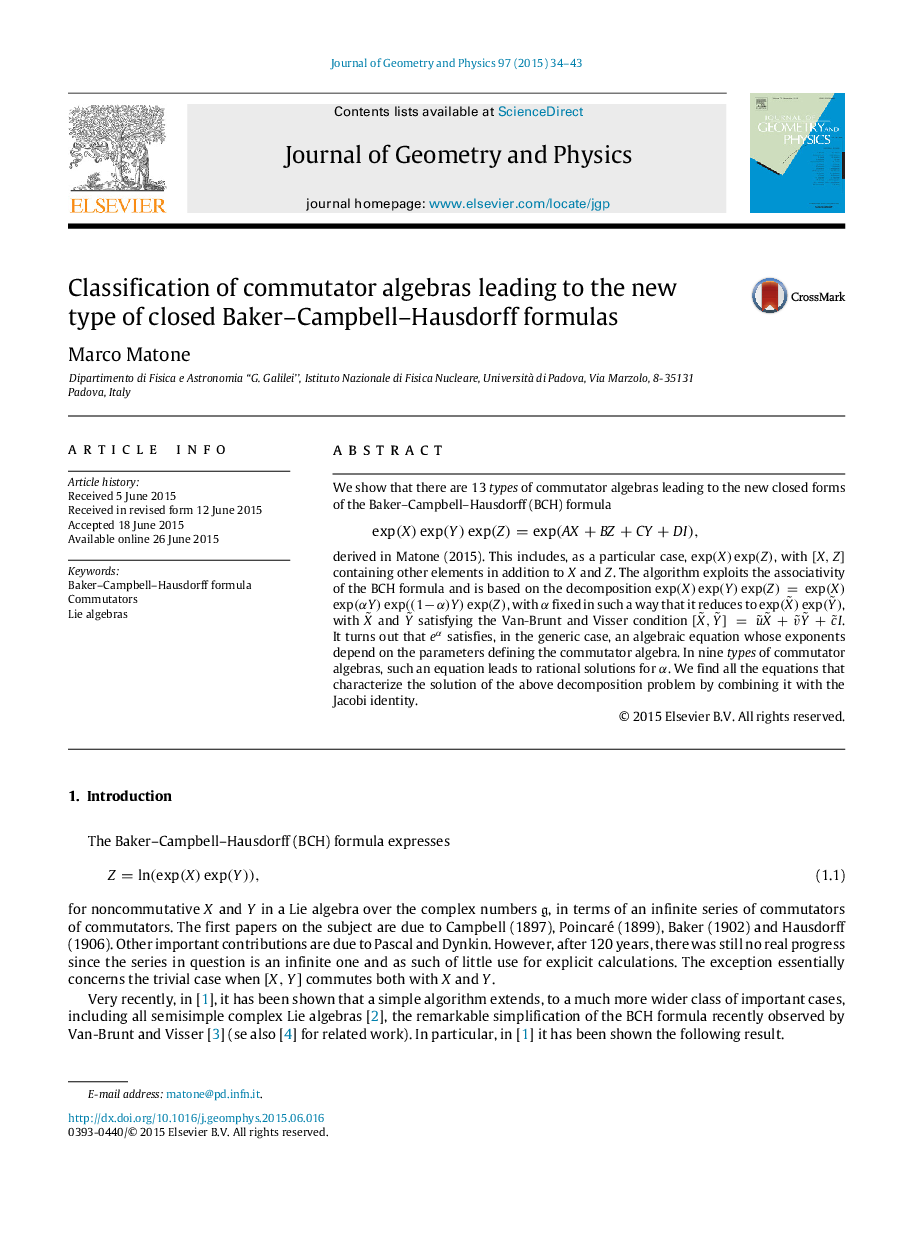| Article ID | Journal | Published Year | Pages | File Type |
|---|---|---|---|---|
| 1898440 | Journal of Geometry and Physics | 2015 | 10 Pages |
We show that there are 13 types of commutator algebras leading to the new closed forms of the Baker–Campbell–Hausdorff (BCH) formula exp(X)exp(Y)exp(Z)=exp(AX+BZ+CY+DI),exp(X)exp(Y)exp(Z)=exp(AX+BZ+CY+DI), derived in Matone (2015). This includes, as a particular case, exp(X)exp(Z)exp(X)exp(Z), with [X,Z][X,Z] containing other elements in addition to XX and ZZ. The algorithm exploits the associativity of the BCH formula and is based on the decomposition exp(X)exp(Y)exp(Z)=exp(X)exp(αY)exp((1−α)Y)exp(Z)exp(X)exp(Y)exp(Z)=exp(X)exp(αY)exp((1−α)Y)exp(Z), with αα fixed in such a way that it reduces to exp(X̃)exp(Ỹ), with X̃ and Ỹ satisfying the Van-Brunt and Visser condition [X̃,Ỹ]=ũX̃+ṽỸ+c̃I. It turns out that eαeα satisfies, in the generic case, an algebraic equation whose exponents depend on the parameters defining the commutator algebra. In nine types of commutator algebras, such an equation leads to rational solutions for αα. We find all the equations that characterize the solution of the above decomposition problem by combining it with the Jacobi identity.
